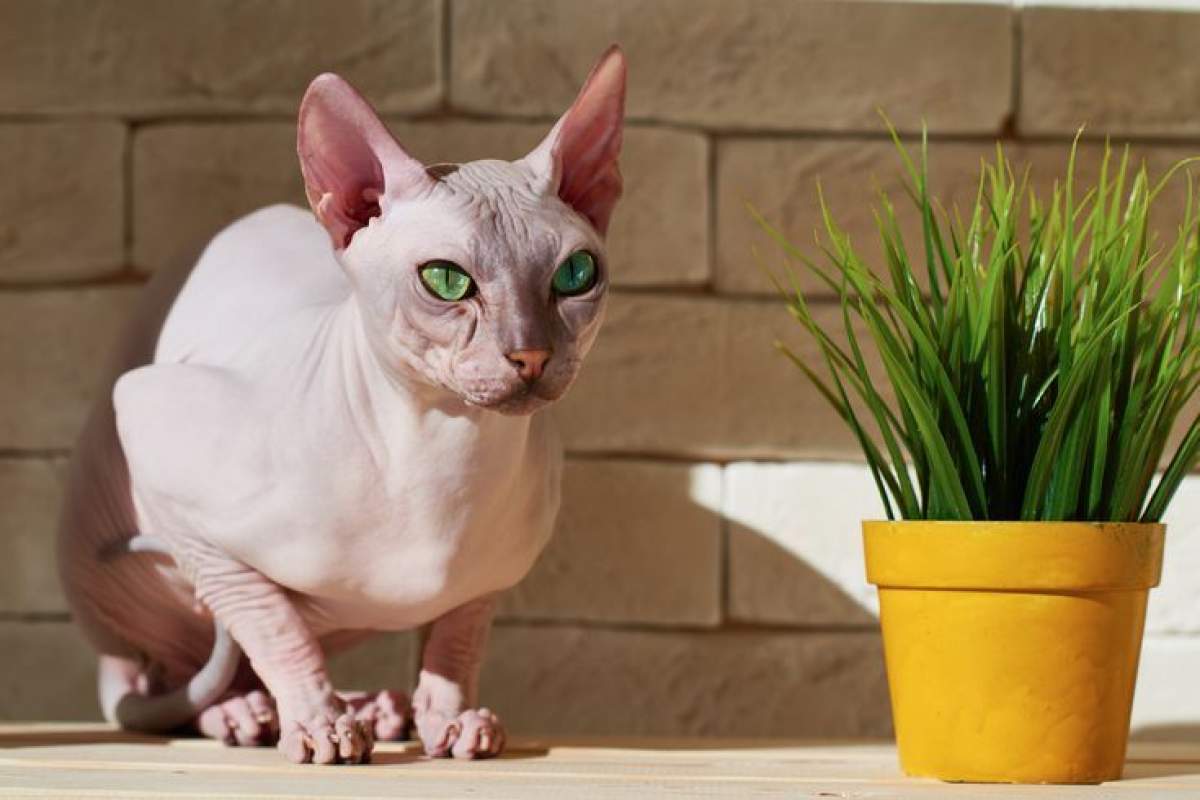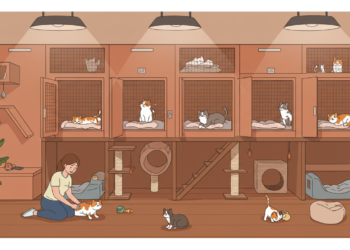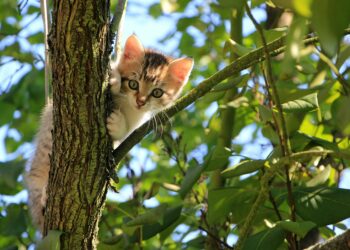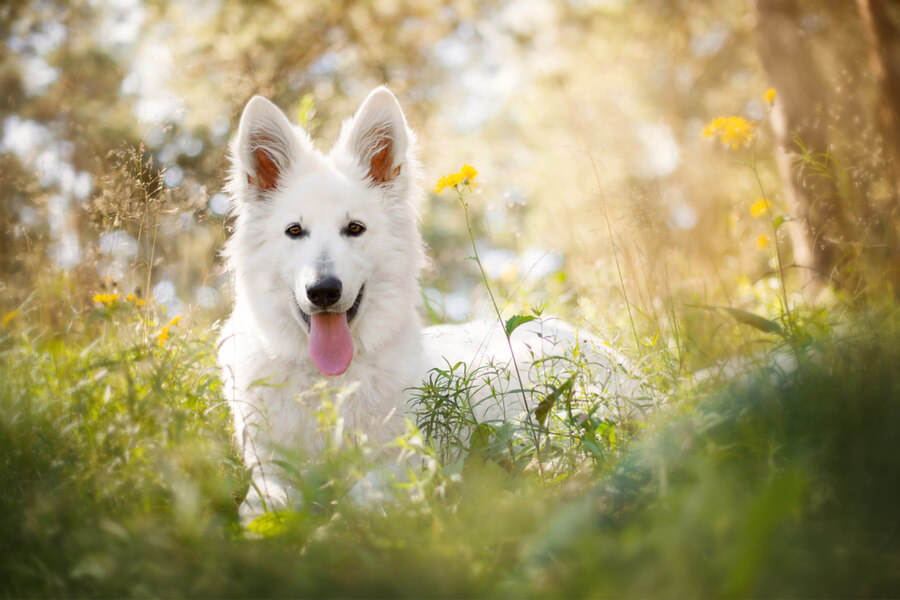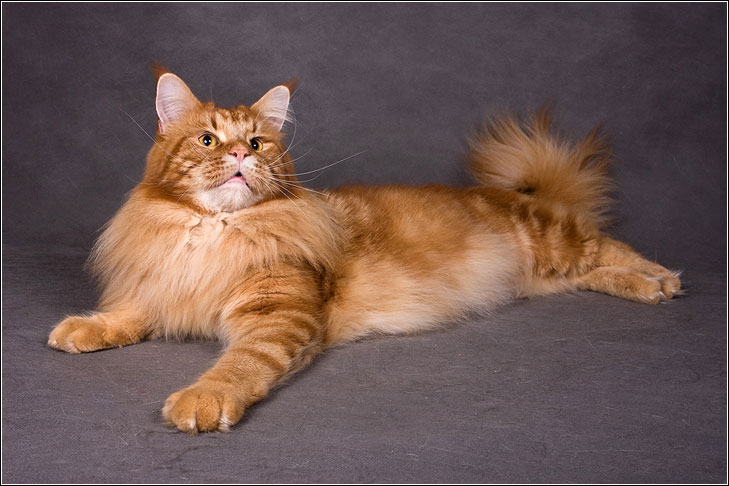If you own or wish to become a hairless cat owner, you should know that hairless cats get mixed reviews. Indeed, their unusual appearance may frighten some or at least arouse their suspicion. Others, on the contrary, will find that this characteristic makes them particularly fascinating.
We invite you to get to know three breeds of hairless cats, or hairless cats and to better understand their specificities. Who knows, if you weren’t a fan until now, maybe we can convince you to adopt one!
Hairless Cat Breeds
When talking about a hairless cat, it is important to know that this term refers to several breeds. Indeed, instinctively, we limit the breeds of hairless cats only to the sphynx, the most famous of the hairless cats. While the Sphynx breed is indeed the first hairless cat breed to emerge, there are a number of other hairless cat breeds. We will discuss in this article two other breeds of hairless cats, the Donskoy and the Peterbald.
Reading Suggestions: Boy Cat Names – Find the Perfect Male Kitten Name
Hairless cats are relatively new breeds. Indeed, the first reference to the sphynx cat dates only from 1966. As regards the Donskoy, this one would have been discovered only in 1987. Finally, the Peterbald only appeared in the 1990s.
The Sphynx
The sphynx is the most famous of all hairless cats. Indeed, it is often him that we think of first when talking about hairless cats. This breed of cats was born in the 60s in Canada, where an alley cat would have given birth to a litter of hairless cats.
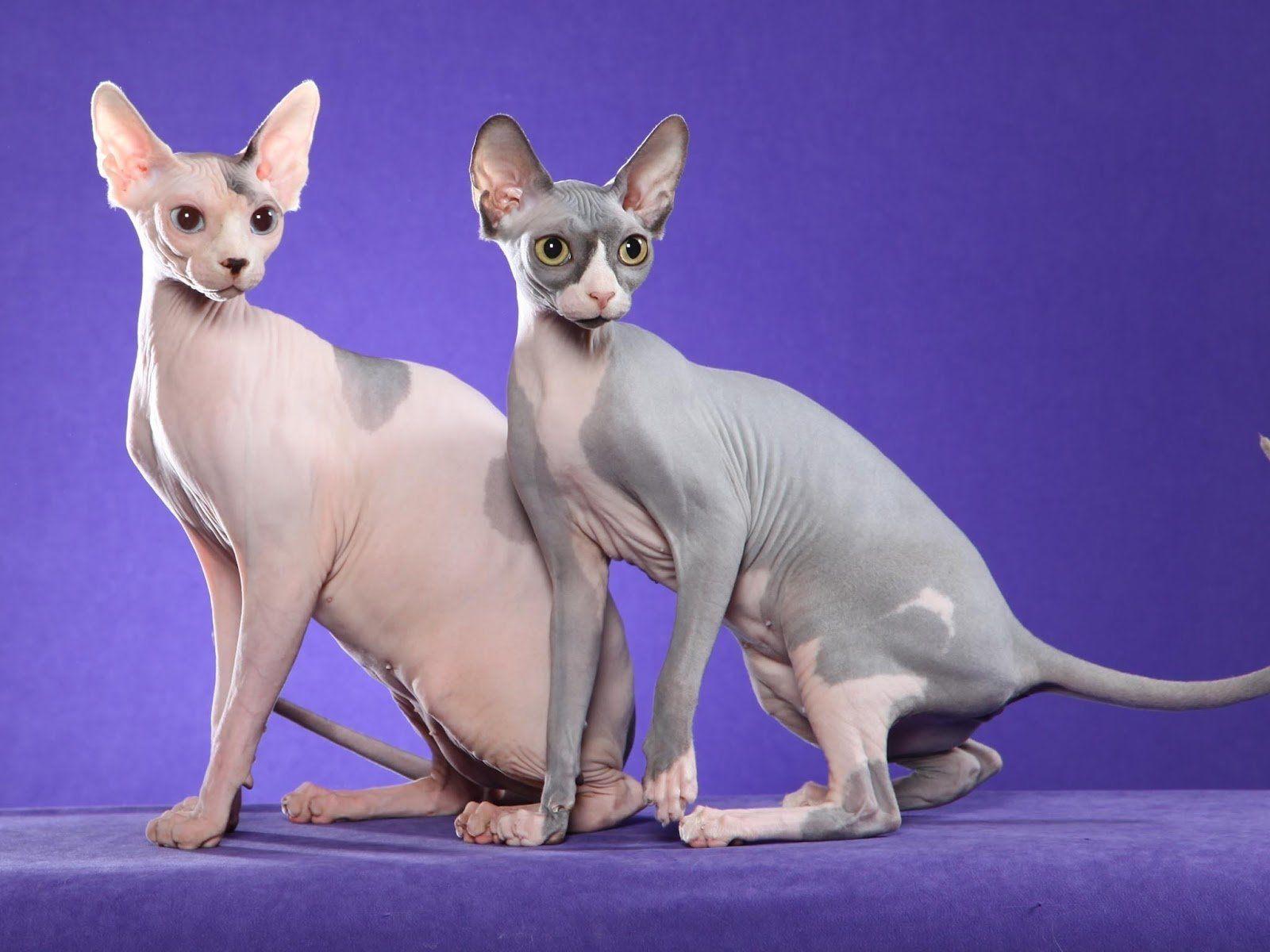
The sphynx can however be considered as a French breed because it is in France that the first cat which served as the basis for the first standard of the breed, Amenophis Clone, was born in 1985 from the marriage of two sphynx cats imported from the Netherlands. Down to France.
The sphynx has an elegant silhouette. His musculature is visible, his belly is round. Its legs are muscular, but also long and slender, the tail is slender. It can be completely naked or covered with a very fine down on the body. Hair is accepted behind the ears, on the mouth, tail and testicles. It is important that the skin has many folds, especially at a young age.
The head is longer than it is wide, the skull is flat. The sphynx has very large ears, wide at the base and rounded at the ends. They are placed quite low. The eyes are large, open, expressive. Their color should be intense and match the cat’s coat.
The sphynx is an affectionate cat, always seeking the attention of its owner and appreciating the company.
This breed of cat is relatively recent, however, it is difficult to draw a typical portrait of the character of the sphynx.
You May Like: Best Cat Breeds for Beginners: a Comprehensive Guide to Choose
The Donskoy
The Donskoy is the second oldest breed of hairless cat, since it first appeared in Russia, in the city of Rostov-on-Don in 1987. The first Donskoy was indeed born there with hair, which he lost as he grew up.

Initially, the vets thought of a disease, but it turned out to be not. Varvara, the Donskoy cat in question, gave birth to a litter made up of half of the hairless cats and the other half of hairless cats. For the first half, the kittens’ hairs ended up falling out, as did their mother.
Future research then determined that the gene responsible for the lack of hair was dominant. Thus, the breed could easily be established by crossbreeding with different breeds of cats, from Europeans to Siberians, including Orientals.
This breed is recognized only at a preliminary stage, and therefore the Donskoy cannot participate in exhibitions. It is a very rare breed in France because there are only 57 pedigrees over the period 2003 to 2014.
Reading Suggestion: Cats With Down Syndrome, Myth Or Reality?
The Donskoy is a medium-sized cat with strong musculature and a broad rump. Its bones are strong and its legs, like those of the sphynx, are long and muscular. Their size is proportional to that of the body. The feet are webbed, which may explain why the Donskoy is a cat that likes swimming outdoors.
The head should be very distinct from that of the sphynx. Otherwise, it would be an eliminatory fault. The head is wedge-shaped and the muzzle is short, the canines are long. If present, whiskers should be curled. The eyes are slanted and almond-shaped. Their color must match that of the dress.
Its ears are large, wide-open, and positioned on the top of the head.
The Donskoy is characterized by its very elastic skin with many folds, especially on the head, armpits, neckline, and stomach. Down is accepted on the muzzle, ears, feet, genitals, and tip of the tail. In winter, the Donskoy’s body can be covered with down. All dress colors are accepted. His skin is strong, and he does not suffer from the sun or the cold.
The Donskoy is a full-fledged breed for the LOOF or WCF, which means it cannot be crossed with other breeds. This is however permitted with alley cats by TICA.
As for his character, the Donskoy is very active. He is affectionate and intelligent and enjoys the company of humans and animals. He has a particularly little bellicose temperament and does not know how to defend himself. It presents, like the Siamese, the characteristics of a cat-dog, because it is a cat that adores its master and follows him everywhere.
The Donskoy’s health is relatively strong, and his life expectancy is 19 years.
The Peterbald
The Peterbald is a hairless cat also native to Russia. More precisely, the breed originates from Saint Petersburg, where it was born in 1994. It is therefore the most recent hairless cat breed. The Peterbald is close to the Donskoy, as it is the result of an experimental cross between a Donskoy and an oriental shorthair cat.
We have already mentioned, the gene responsible for the lack of hair of the Donskoy is dominant, so it was not difficult to maintain this peculiarity in the Peterbald, which, by this crossing, also displays the characteristics of the Oriental.
The Peterbald standard has existed since 1996 when the breed was recognized by the Russian Cat Federation. The TICA (The International Cat Association) recognizes the breed. It was not until seven years later that the World Cat Federation recognized this breed, in 2003.
The Peterbald, because it is the result of a cross between the oriental and the Donskoy, displays characteristics specific to each of these two breeds. From the oriental, he retains a long body, a triangular head with prominent cheekbones, large ears. Its eyes are almond-shaped and can be blue or green in color.
The paws of the Peterbald are long and slender, the feet oval and the toes elongated.
Not all Peterbalds are naked. Indeed, there is a naked variety in which the body is completely hairless and the skin is elastic. There is also a so-called velvet variety because the skin is covered with a fine down. Sometimes the ends are hairier. Finally, the Peterbald brush variety has the skin covered with short, curly and hard hair and can be found in varying density depending on the location of the body. Traditional dresses as well as colorpoints are accepted in all colors.
When it comes to the character of Peterbald, he is a well-balanced cat, who is peaceful. Endowed with great energy and curiosity, he is a pleasant cat. However, he inherited from the Oriental a difficulty in enduring loneliness. It is therefore a cat that is often in search of attention, but also very sociable.
Apart from this, the fact that the breed is relatively young, however, does not determine any particular trait.
Hairless cat care
Although they are hairless, hairless cats need special care. Donskoy and Peterbald require relatively simple care. However, they can sweat, and have no fur to hold it in. It is therefore important to give them a weekly bath, which in theory will not be a problem for them, because they love it!
As for the sphynx, it requires a bit more care. Indeed, his skin is sensitive to the sun’s rays and if sunbathing is planned, it is advisable to apply sunscreen, otherwise, he could catch a sunburn.
You should also bathe your sphynx once or twice a month in order to rid its skin of the sebum produced in large quantities using a damp glove. Without it, the pores on her skin could become clogged.
The sphynx also has a strong propensity to have waxy ears. You should therefore regularly clean your ears, but also anywhere on the body where excess sebum could lodge. This is for example the case with interdigitated spaces or zones situated between the pads of the legs.
You have now learned some facts about three of the hairless cat breeds. Hairless cats have a polarizing appearance. Although they are not to everyone’s liking, they are affectionate, so if you are considering adopting a hairless cat, keep in mind that these are cats with specific needs, but will know to make you love you as much as a furry cat!
Other Cat Breeds
Want to share your hairless cat care tips? Share through our social media pages including Facebook, Twitter and Pinterest.


